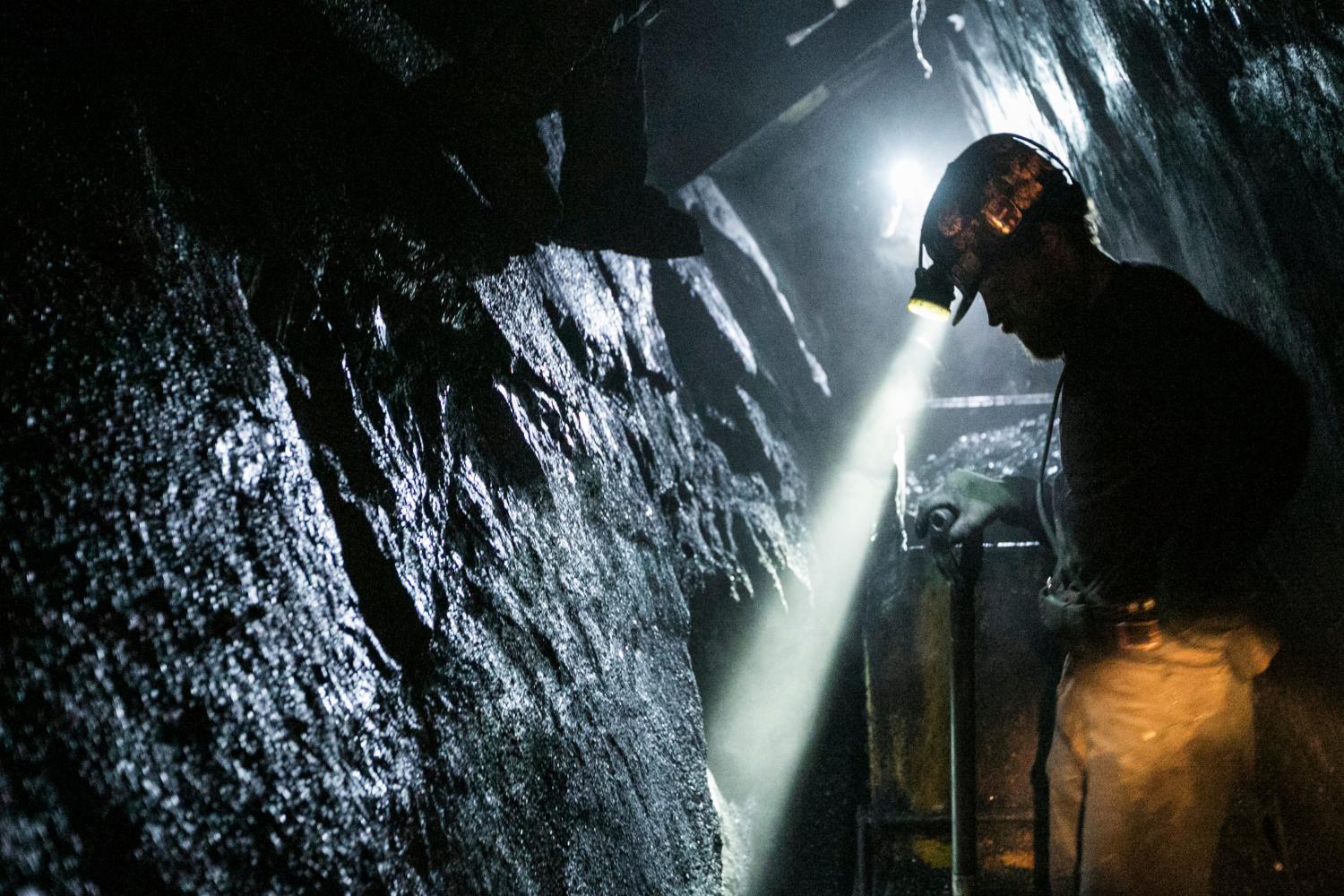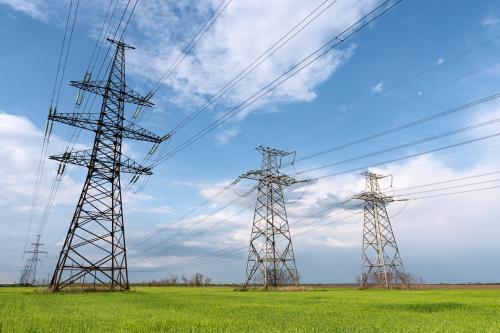Officials in the United States and around the world are launching new “just transition” initiatives at an unprecedented pace, creating policies and programs to help workers impacted by the clean energy transition. Several U.S. state leaders are included among those that have recently undertaken just transition initiatives, including Colorado and New Mexico.
The rapid adoption of just transition initiatives can be explained by three factors. First, a government-mandated energy transition creates moral responsibilities to help workers find new jobs. Second, the geographical concentration of fossil fuel reserves – and in some cases their distance from larger markets – means that local economies will struggle to reallocate workers to new jobs in the absence of public intervention. Third, a just transition is politically expedient. Many of these workers live in swing states (like Pennsylvania) or in states with influential lawmakers (like West Virginia). As such, just transition programs can reduce political frictions.
A smoother political process is essential to speed up the clean energy transition. While large-scale energy transitions have occurred on several occasions in the past, none required determined and long-term political support on such a scale. And to avoid the worst effects of climate change, decarbonization will have to happen quickly – by 2050 if the target is to limit warming below 2 degrees Celsius. Just transition policies thus have a critical role to play in the clean energy transition.
A review of just transition initiatives quickly reveals that they vary in shape and ambition, but ultimately, they all consider the same problem: How can workers who depend on fossil fuels for a living transition to new livelihoods in a post-carbon world? The scope of the problem, with millions of workers across the world employed directly or indirectly in carbon-intensive industries, is staggering. The United States itself needs to find ways to support 1.7 million people who work in the fossil fuel sector. This includes all oil, gas, and coal operations, as well as workers in connected industries such as pipeline workers.
However laudable the ambitions behind just transition programs are, the question remains: How can so many workers find new and meaningful jobs over such a relatively short period of time? Most just transition efforts in the United States have been driven by local stakeholders. While this bottom-up approach has much value, lack of national-level support could create inefficiencies and wasted opportunities. We highlight several critical policy issues and how to address them.
First, the United States needs to coordinate just transition policies at the federal level by creating a dedicated Just Transition Office. Several states have recognized the problem and the need for governments to help workers, but the United States has a well-integrated labor market. Workers in, say, Wyoming may look for jobs in Utah, Colorado, or other states. State-led actions to attract new industries run the risk of harmful competition, leading to a race to the bottom. For instance, overly generous tax cuts to attract investors could have detrimental effects on public finances. Furthermore, local policy action will have a local bias. In some cases, workers might be better off relocating. Addressing these issues requires empowering and properly funding a Just Transition Office over the long run.
Second, any federal or regional just transition initiative must identify the key frictions in labor markets that prevent a smooth transition of workers across industries. Aimlessly channeling money is not going to help those who need it. There is a paucity of data in this area, especially when it comes to identifying individuals and communities that are most at risk. Close collaboration between authorities and the Bureau of Labor Statistics (BLS) as well as civil society can help provide the data that policymakers and other stakeholders need. In particular, we need a clearer understanding of (a) the regions that are the most at risk, (b) the types of workers who need the most support, and (c) the solutions that match workers’ aspirations. Where these data already exist (e.g., data on skillsets and labor market outcomes), the BLS should facilitate access for researchers and other stakeholders. Where they do not exist (e.g., data on job preferences), the federal government should provide resources to undertake tailored surveys of at-risk communities.
Ultimately, the success of just transition programs will depend on appropriate funding. Cost estimates vary considerably, but in a post-COVID world, the Federal government will be in a better position than state authorities to raise the funds needed to complete a just transition. Federal funding must be commensurate to the challenge and include resources for retraining, relocating, and public investments to generate new sources of income for affected communities.
Just transition initiatives in the United States and abroad
Over the last fifty years, governments in North America and Europe have undertaken a range of environmental reforms to address issues such as acid rain, carbon dioxide and other greenhouse gas emissions, and deforestation. Then as now, environmental regulations often try to discourage pollution by making it more expensive—either by pricing it or by punishing polluters with fines. The 1990 Clean Air Act Amendments, for instance, used a cap-and-trade scheme to curb sulfur dioxide and reduce the consumption of coal.
Market forces and the growth of modern renewable electricity sources have dented the domination of fossil fuels in the power sector. The coal industry in particular has entered a phase of decline in the United States. Coal generated 2,000 billion kWh of electricity in 2007. By 2020, its contribution had been cut to 773 billion kWh. Employment followed a similar trajectory: employment in coal mining went from over 125,000 workers in 1990 to less than 50,000 nowadays. Adele Morris shows that the odds of a rebound in the coal sector are low. This is a small number of workers by U.S. labor market standards, but their influence is disproportionate given their geographic concentration in a small number of key states. Likewise, oil and natural gas have also declined, especially in the aftermath of the COVID-19 pandemic, but remain important sectors: natural gas employs about 200,000 people and petroleum just under 500,000. These patterns are not limited to the United States. In the United Kingdom, for instance, coal went from being the largest contributor of electricity in 1990 to being wiped out by 2020, and coal jobs in the country have all but disappeared.
Facing these long-term challenges, labor unions developed the concept of “just transition” to encompass the need for dedicated programs to ensure that labor would not lose out from greening public policies in the United States. Their concern was that the burden of reducing the environmental footprint of the U.S. economy was unduly placed on workers. The Democratic Party—labor’s traditional allies—was veering toward toughening environmental regulations. A just transition, then, called attention to the unintentional side effects of green policy.
Since 2010, the concept of just transition has received growing interest from policymakers. Initiatives have been launched across the world. The European Union is implementing a Just Transition Mechanism which is expected to raise 55 billion euros (about $58 billion) between 2021 and 2017 via public investments, subsidized private investments, and loans. The EU also promoted collaborative initiatives. During the last Conference of the Parties in Glasgow, it announced jointly with the United Kingdom, the United States, France, and Germany the creation of a “Just Energy Transition Partnership” to support South Africa in its decarbonization efforts. In India, civil society is pushing for similar initiatives. In Colombia, another coal-producing country, the government partnered with the International Labour Organization to create green jobs and facilitate a just transition.
In the United States, much of the just transition action has so far occurred at the state level. In Colorado, a Just Transition Office was launched in 2019. Its missions are primarily focused on channeling investments into coal communities and coordinating state and local policies. New Mexico’s Energy Transition Act, also signed into law in 2019, stipulates that millions must be invested to “ensure a just transition.” Elsewhere, proposals to create just transition institutions and other working groups have been submitted in states such as West Virginia and New York.
Action has been slower at the federal level. Two House representatives introduced the Just Transition for Energy Communities Act that would create a program at the Department of Treasury to fund just transition policies across the United States. The Biden administration took its first steps in meeting just transition expectations by setting aside $16 million under the supervision of the Department of Energy to create a roadmap for communities historically linked to fossil fuel extraction.
Enabling a just transition requires federal action
The growth of just transition initiatives is encouraging and may contribute to a smoother transition for workers in greenhouse gas-intensive industries. However, how to implement successful programs in practice remains an open question. Existing programs have short track records making it hard to learn from them.
The problem is further exacerbated by differences in contexts across countries and across workers. For instance, the problem faced by workers in a country with extensive social safety nets (say, Germany) differs from the challenge faced in countries with fewer protections for labor (say, India). The threat is therefore uneven internationally.
But context varies in other important ways. The problem of decarbonization has two components. One is the scale: how many workers need to be helped. In the case of the United States, 1.7 million people are employed directly by fossil fuel. This includes workers in extraction, support activities, and in utilities. It could also include the many more who live in communities that depend on this sector. The resources needed to implement a just transition will reflect the number of workers affected.
How costly would it be to facilitate the transition of fossil fuel workers? One study by Robert Pollin and Brian Callaci estimates the cost of a just transition program for American workers to be about $600 million per year. The actual bill will likely end up higher, as this study does not take into account issues such as failed retraining programs and administrative expenses. It also focuses on workers in extraction and mining—about 250,000 workers. The relatively modest cost per worker (about $2,300 per year) can also be explained by natural retirement cycles assumed in their model as well as declining employment trends. Yet for these regions to stop their decline, these jobs and many more will need to be created.
One may ask: Why do we want these regions to grow – or at least stop declining? Historically, internal migration has been a perfectly sensible response to changes in economic opportunities, with labor leaving moribund markets for booming ones. There are at least two reasons. First, some workers are not geographically mobile. For instance, homeownership reduces mobility, especially for workers in markets with stagnating house prices—which is precisely the case of regions such as Appalachia. Second, the U.S. political system will continue to allocate Senate seats to states where these regions are located. We know that economic decline feeds political extremism. Thus, helping these regions is also important to avoid undermining economically liberal voices.
Implementing a just transition offers the opportunity to complete an orderly phaseout of an industry that does not leave workers stranded with no jobs and lost pensions.
The second component is dependence: how dependent a region is on carbon-intensive sectors. Diversified economies can more easily absorb the decline of an industry than more concentrated ones. In regions where an industry represents a large share of labor, a negative shock cannot easily be overcome, leading to long-term economic decline. Past examples abound, including the Rust Belt, which experienced a decline in manufacturing and steel production since the 1980s. While typical “monotowns” have become less common, geographical concentration of fossil fuel resources tend to create pockets in which this industry is a dominant actor.
Consider coal. As noted above, nominal employment in the coal industry has decreased dramatically over the past thirty years across the United States. Yet the concentration of coal workers remains extremely high in parts of the country. The percentage of the labor force that works in the coal sector in southwest West Virginia is around 30% in several counties according to BLS data.
A better statistic to understand the over- or underrepresentation of a sector is the location quotient, which represents the ratio of workers employed in an industry locally compared over the same ratio at the national level. In Greene County, PA, the location quotient of mining, oil, and gas is 45, meaning that the concentration of this industry is 45 times higher than nationally. In Mingo County, WV, the location quotient of coal (as of 2015) is over 470. To understand the scale of these numbers, we can compare them with other cases. The location quotient of gambling dealers in Las Vegas—a place well-known for its casinos—is about 29. In New York, the location quotient of the financial sector is about 3. In other words, fossil fuel jobs are extraordinarily concentrated geographically, and they represent a central node in regional economies. Thus, we cannot rely on nominal employment numbers to assess which places need support. Instead, we need to take a holistic view and assess regional vulnerability in addition to individual workers’ vulnerability.
Just as importantly, not all workers face similar odds in a post-carbon world. Catch-all terms like “coal” or “oil workers” hides dozens of different types of jobs. The fossil fuel sector employs miners, truck drivers, civil engineers, secretaries, lawyers, security staff, and so forth. Looking beyond the fossil fuel industry, the range of jobs expands even further if we consider other areas that may suffer from decarbonization, such as the car and steel sectors. The ease of transitioning to new employment is hardly identical across these occupations and skillsets. Beyond skills and expertise, additional complications include occupational licenses, which prevent some fossil fuel workers from switching industries. To illustrate the problem: In West Virginia, someone who does electrical work in coal mines must have three years of experience to apply to become a certified electrician, while the traditional route only requires a year of experience.
Policy priorities
While context differs even within the United States, these challenges shed light on key commonalities that just transition policies must address.
First, the federal government should create a permanent Just Transition Bureau. The Department of Energy should serve as the focal institution of federal action on just transition. Empowering such a bureau would facilitate policy coordination across the country. Local- and state-level initiatives are helpful to gather information about bottom-up demands, but a lack of federal coordination creates risks. There is evidence that local authorities already compete excessively to attract firms and investments at the cost of severe tax revenue losses. Given how dependent some regions are on fossil fuel jobs, one may expect them to engage in a race to the bottom that could exacerbate other problems caused by low tax revenues. A federal-level institution may also help disseminate information. Local authorities are often constrained in their capacity to learn about policy successes and failures elsewhere. This bureau could thus also serve as a centralized resource for best practices.
Aside from vertical coordination with state authorities, the Department of Energy (or another focal institution) will also need to undertake horizontal coordination among U.S. federal agencies. Currently, a lack of data hampers decisive action. To be effective, just transition initiatives must be able to know which workers are at risk. Corporate lawyers for a coal company face dramatically different challenges than, say, a coal miner. While they technically count as fossil fuel employees, their prospects are quite different from more specialized workers.
Just transition initiatives must also take into account that not all communities are equally vulnerable. We noted above that fossil fuel workers are overrepresented in some labor markets such as Mingo County, WV. The BLS already collects some of these data, but they are difficult to access. The Department of Energy should facilitate access to these data for researchers and other stakeholders. It should also fund the collection of data that are not currently available, such as information about workers’ job preferences.
Lastly, federal support for just transition policies must be proportional to the challenge. Part of it will be about consistent funding. There exist few estimates of the cost of a just transition, and those that exist vary considerably in size. On the lower end of the spectrum, the estimate by Pollin and Callaci cited above suggests a modest $600 million per year. Yet we noted that they focused on a narrow definition of fossil fuel workers. It is also not clear whether such modest investment can reinvigorate the economy. The price tag to achieve the latter might be considerably higher. Another study by Pollin and Callaci, which focuses on ways to rejuvenate Pennsylvania with clean energy investments (a type of policy often included in just transition proposals), articulates a much higher number—$23 billion per year between 2021 and 2030 to generate 162,000 jobs—a cost that would be extremely contentious and unrealistic politically.
Regardless of the exact cost of sustaining a just transition, the federal government remains best positioned to fund it. State revenues have been hurt considerably by COVID-19. Federal budgets do not suffer from the same kind of budgetary constraints that state budgets do. The federal government could also mobilize new revenues – such as those from a carbon tax, as suggested by Adele Morris – to fund these initiatives. Such funding is needed to support a range of activities. First, resources are needed for workers who wish to retrain. Second, some workers may want to relocate, which is difficult and expensive—especially for workers from regions with declining housing markets. Thus, we cannot expect labor markets to clear without policy intervention. Third, funding is necessary to support pension plans. Lastly, and more broadly, public investments and favorable incentive policies are necessary to attract and develop new jobs. The development of alternative livelihoods will not take place without vigorous public investments.
A just transition: A blueprint for other transitions?
Implementing a just transition offers the opportunity to complete an orderly phaseout of an industry that does not leave workers stranded with no jobs and lost pensions. Doing so is morally just and politically smart. It also offers a unique learning opportunity for policymakers. Automation and other technological innovations will continue to disrupt the American labor market over the coming years. The sooner policymakers find out how to soften this process of “creative destruction,” the better equipped they will be to support workers when the next phase of transition emerges.








